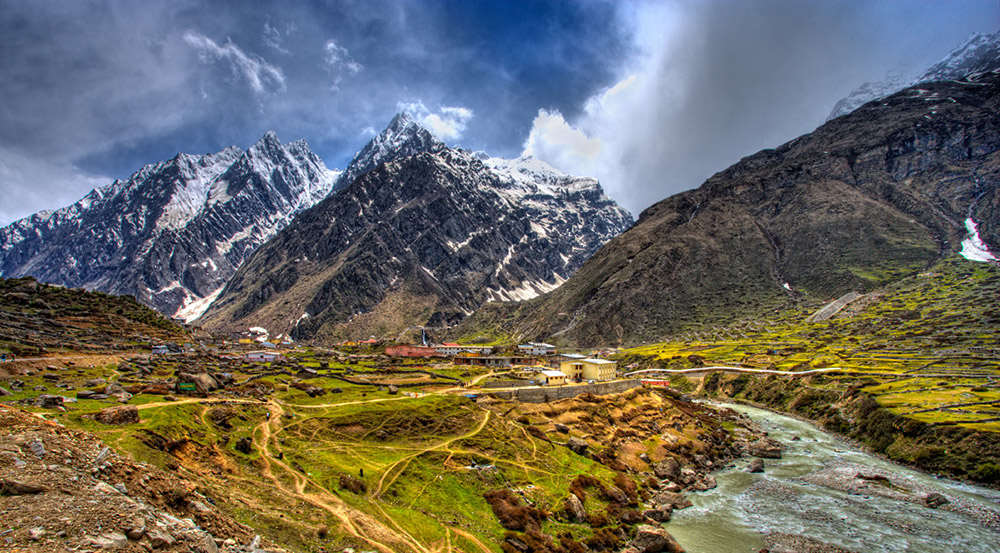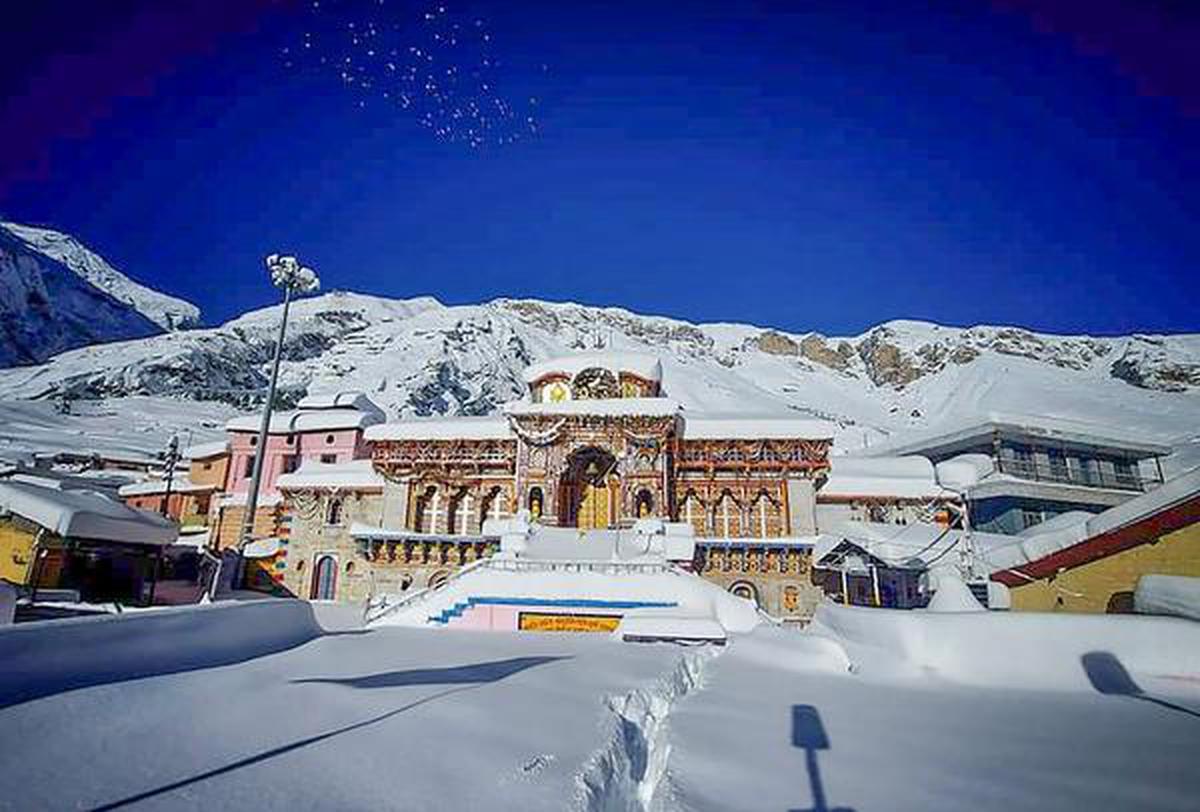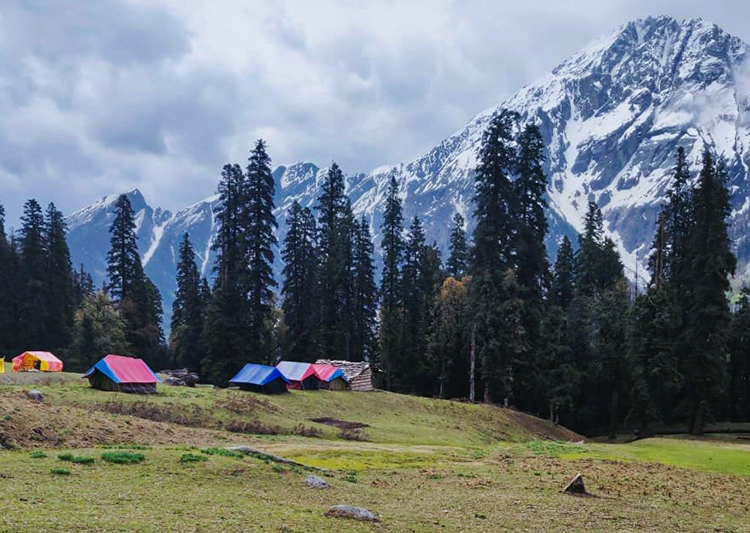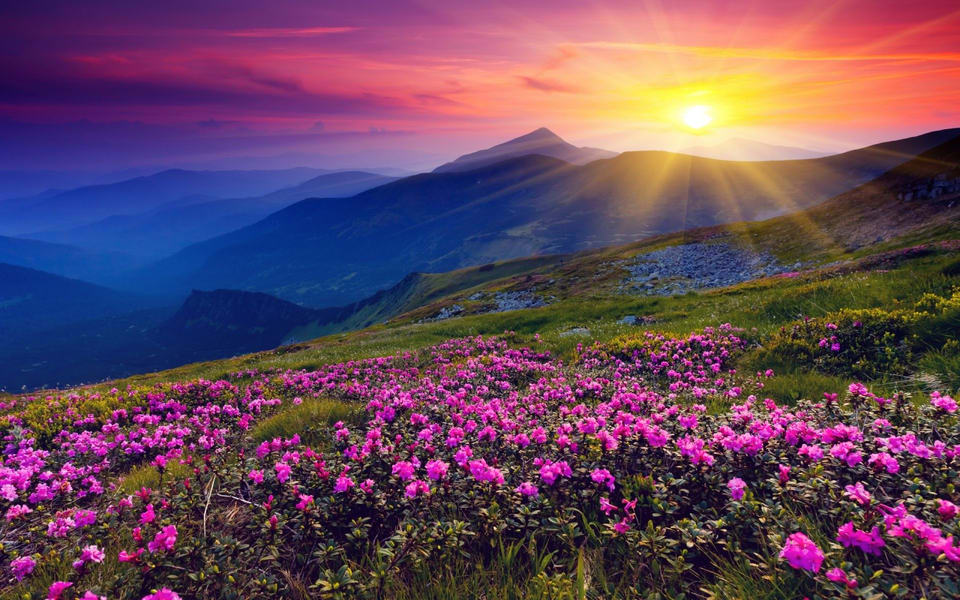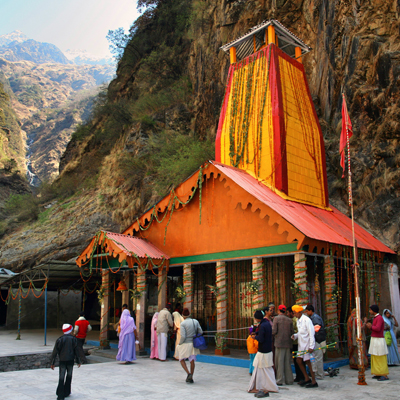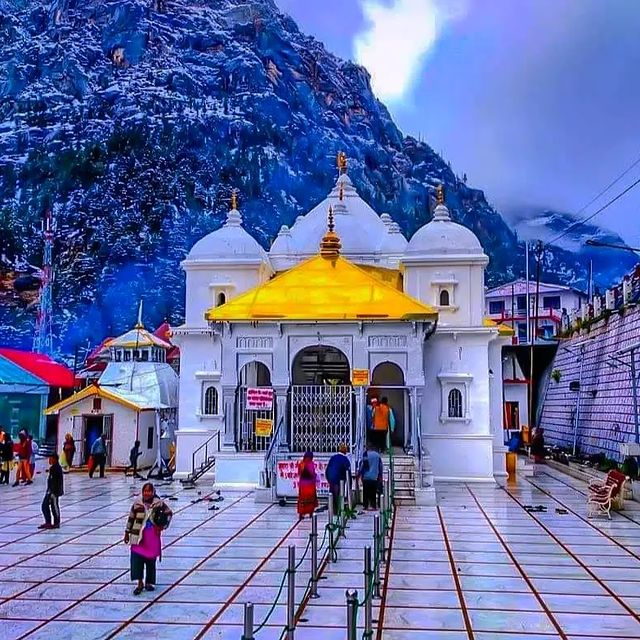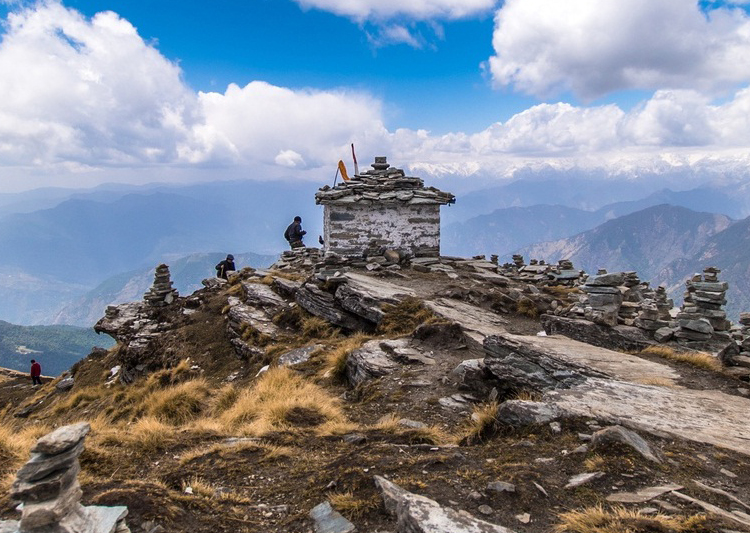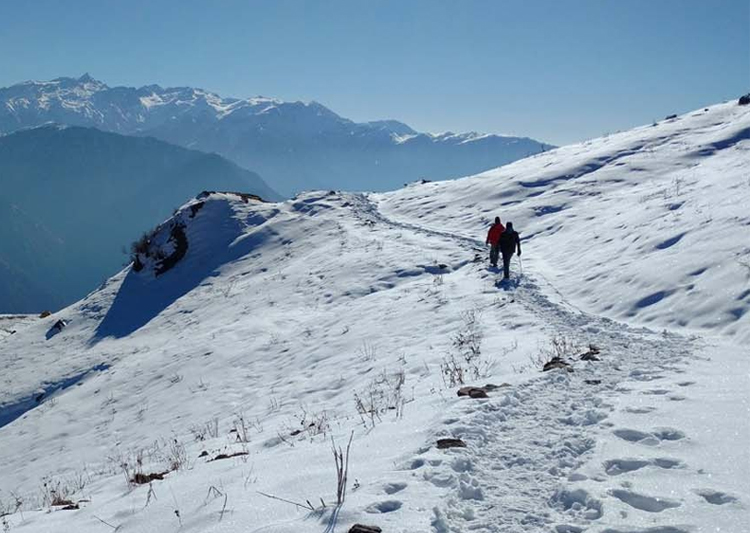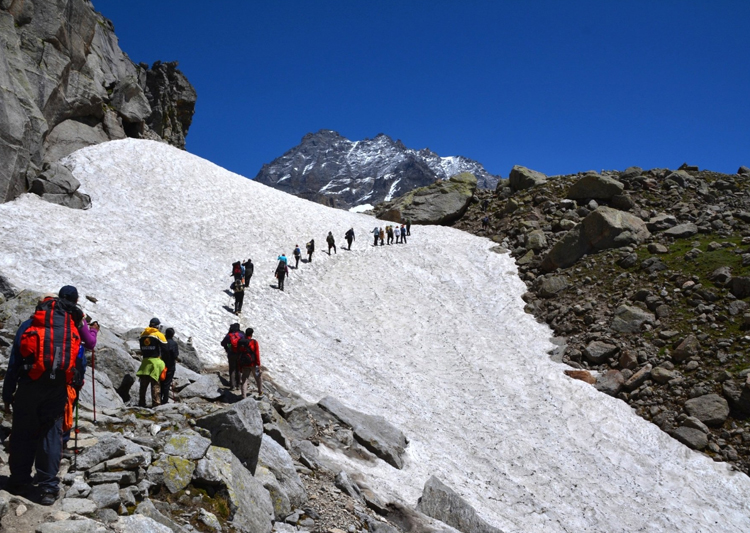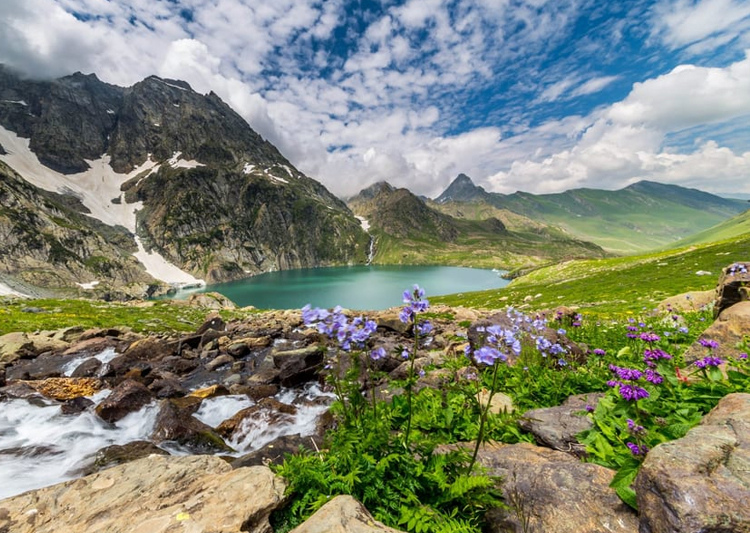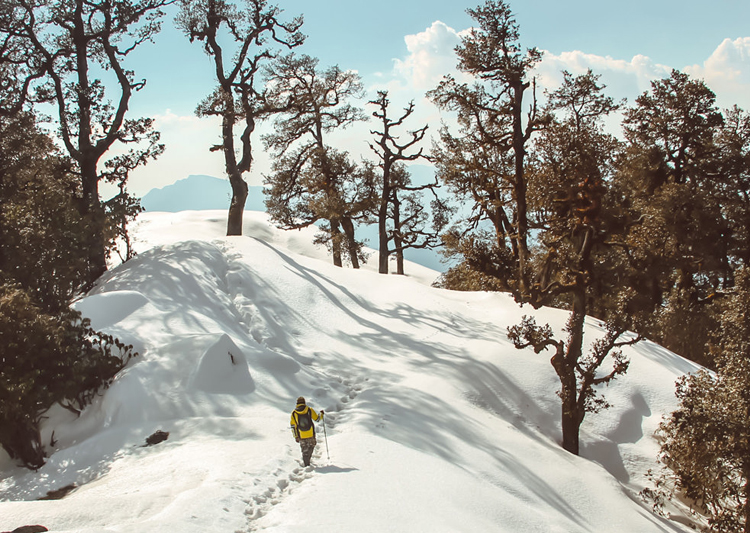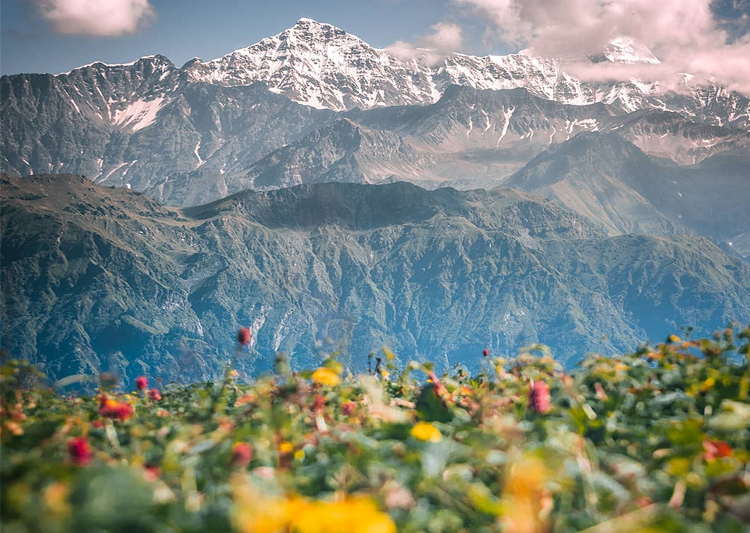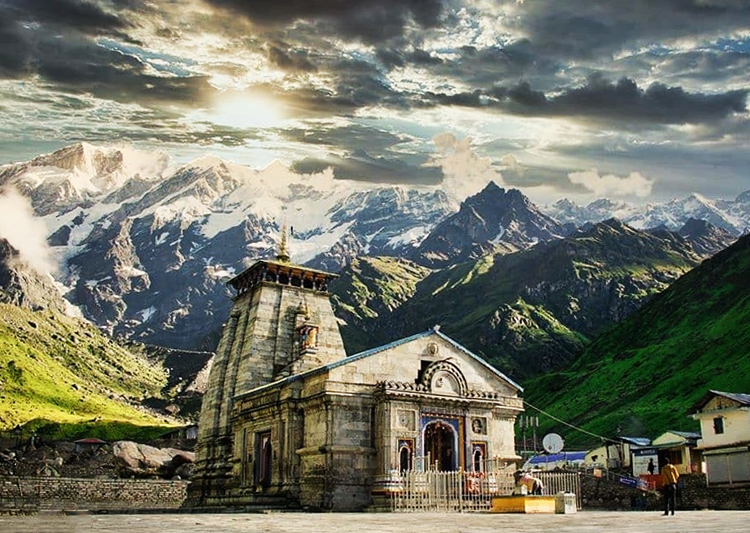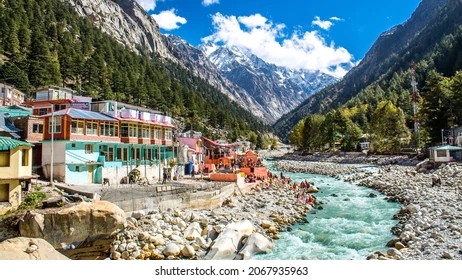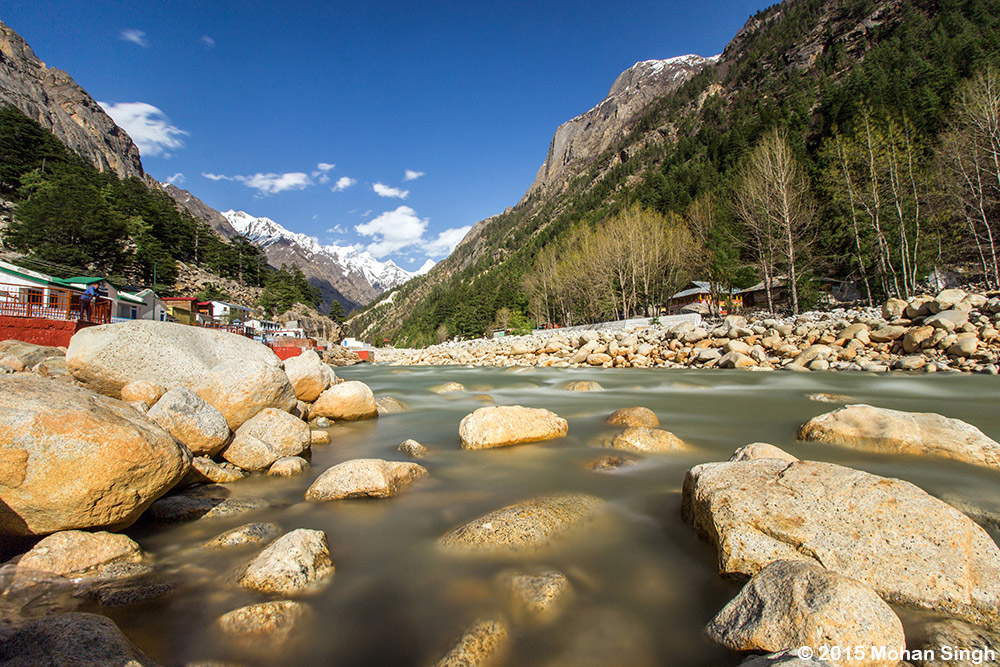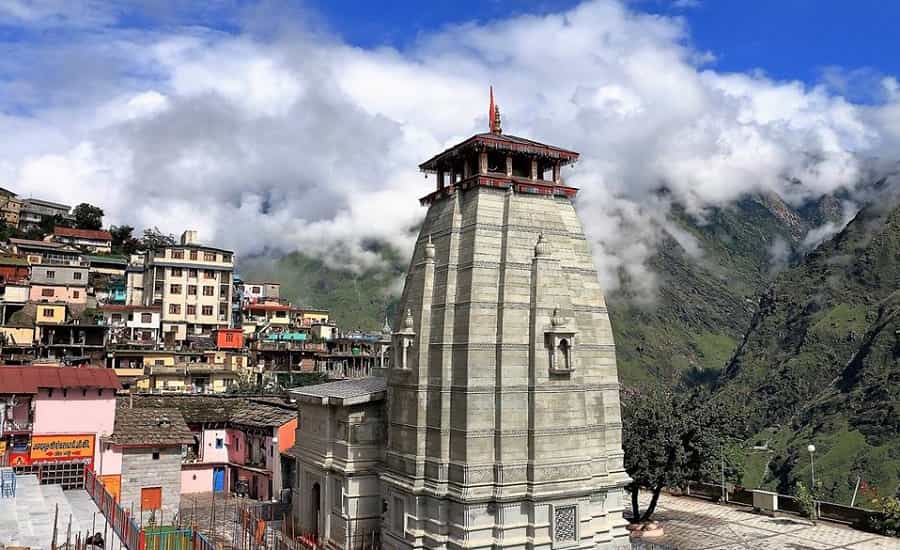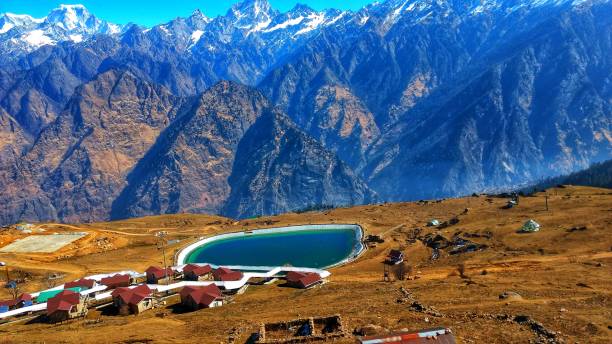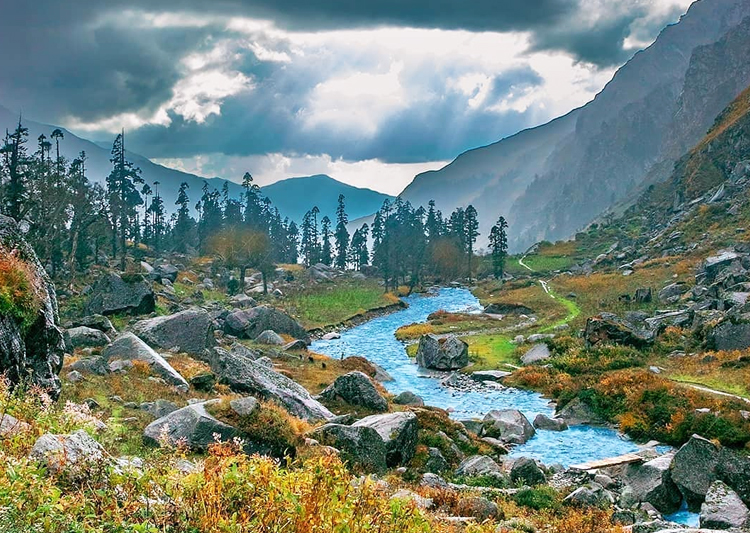The temple is located in Garhwal hill tracts along the banks of the Alaknanda River in Chamoli district in Uttarakhand. The hill tracts are located 3,133 m (10,279 ft) above the mean sea level. The Nar Parbat mountain is located opposite to the temple, while the Narayana Parbat is located behind the Neelkanth peak. Adi Shankara established Badrinath as a pilgrimage site in the ninth century.The temple has three structures: the Garbhagriha (sanctum), the Darshan Mandapa (worship hall), and Sabha Mandapa (convention hall). The conical-shaped roof of the sanctum, the garbhagriha, is approximately 15 m (49 ft) tall with a small cupola on top, covered with a gold gilt roof. The facade is built of stone and has arched windows. A broad stairway leads up to the main entrance, a tall, arched gateway. Just inside is a mandap, a large, pillared hall that leads to the sanctum, or main shrine area. The walls and pillars of the hall are covered with intricate carvings.
The main shrine houses the 1 ft (0.30 m) Shaligram (black stone) deity of Badrinarayana, which is housed in a gold canopy under a Badri Tree. The deity of Badrinarayana shows Him holding a Shankha (conch) and a Chakra (wheel) in two of His arms in a lifted posture and the other two arms resting on His lap in a Yogamudra (Padmasana) posture. The sanctum also houses images of the god of wealth—Kubera, sage Narada, Uddhava, Nara and Narayana. There are fifteen more images that are also worshipped around the temple. These include that of Lakshmi (the consort of Vishnu), Garuda (the vahana of Narayan), and Navadurga, the manifestation of Durga in nine different forms. The temple also has shrines of Lakshmi Narasimhar and for saints Adi Shankara (CE 788-820), Nar and Narayan, Ghantakarna, Vedanta Desika and Ramanujacharya. All the deities of the temple are made of black stone.
The Tapt Kund, a group of hot sulphur springs just below the temple, are considered to be medicinal; many pilgrims consider it a requirement to bathe in the springs before visiting the temple. The springs have a year-round temperature of 55 °C (131 °F), while outside temperature is typically below 17 °C (63 °F) all year round. The two water ponds in the temple are called Narad Kund and Surya Kund.
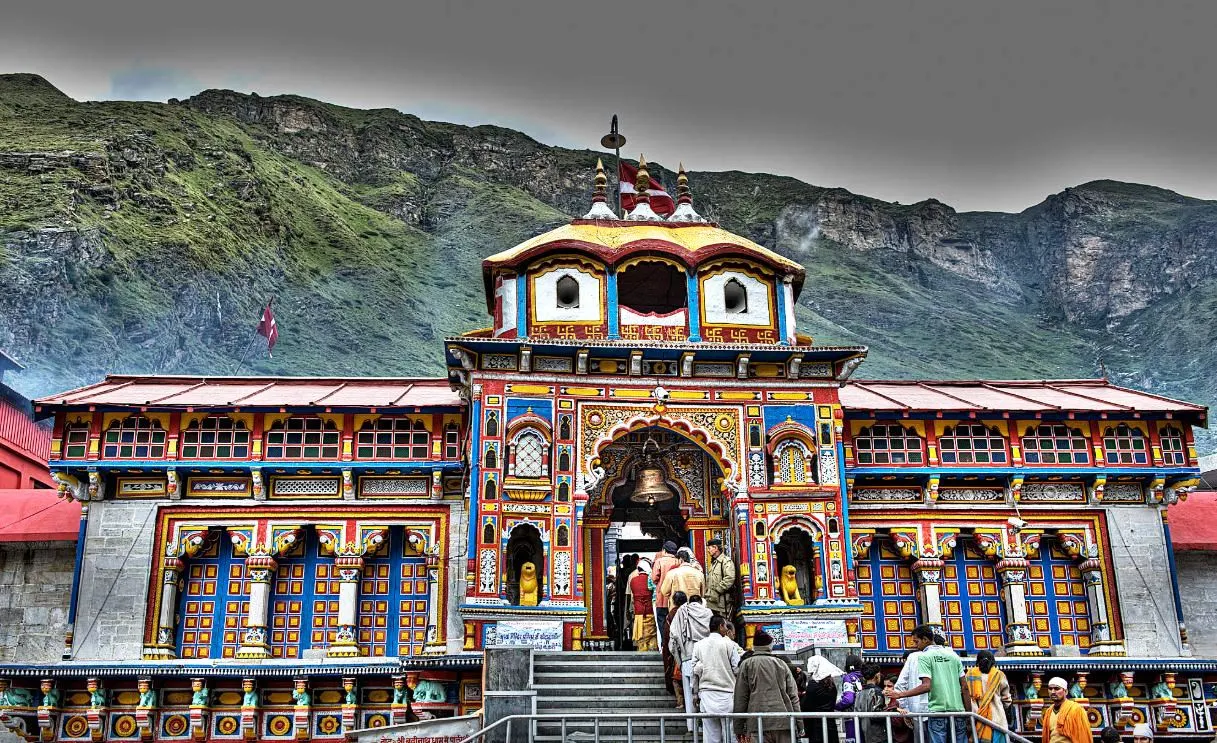
.jpg)
